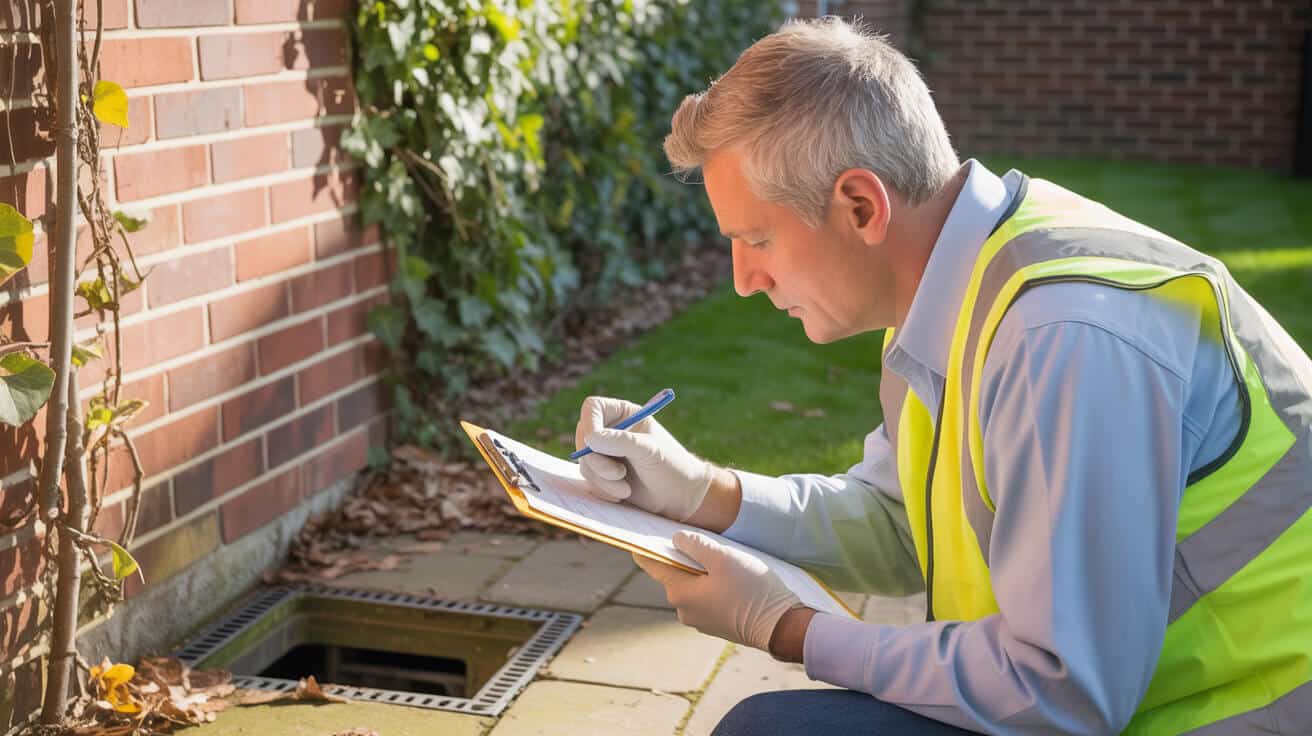 Managing Plumbing in London’s Basement Conversions and Extensions
Managing Plumbing in London’s Basement Conversions and Extensions

Why Is Plumbing a Stand-Alone Challenge in London’s Basements?
There’s nothing routine about plumbing a London basement. Each project sits below a centuries-old city, hemmed in by mystery pipework and risk-laden soil. From the moment a homeowner, landlord, agent, or commercial client sketches out a basement plan, one fact is inescapable: your wet rooms and utility systems are now below the main public sewer. Gravity is no longer your friend—it’s your first obstacle.
Water always finds its way; in a London basement, so does trouble—unless you plan with the city’s bones in mind.
No other room in your home, flat, or office exposes you to so many non-negotiable challenges:
- Negative invert level: Most basements sit lower than the street sewer, forcing every drop of waste and water upward—against its natural path.
- Historic pipework and network crossover: Victorian drain quirks mean your pipe run might cross, feed, or block up against your neighbour’s, demanding a forensic survey.
- Flood risk compounded: London’s older boroughs see rising storm surges; a wrongly-sealed drain can backflow sewage through your new bathroom floor, with insurance refusing to pay *(Thames Water, 2024)*.
The upshot? Every service demands code-level precision. Licenced engineers must diagnose invert levels, survey every century-old workaround, and preempt the oddity of hidden, noncompliant pipe routes. Any shortcut here can trip Building Control, void future insurance, block sales, or leave your basement at the mercy of London’s sudden floods.
What Happens If You Underestimate Basements?
You can’t treat below-ground projects like “just another bathroom.” Skipping a full specification is a false economy: what seems like money saved up front can torpedo your approvals, turn insurers away, and lead to leaks, odour, or flood events that threaten property value and peace of mind.
That’s why property professionals, developers, and careful homeowners rely on certified, WaterSafe-registered engineers. Below street level, plumbing isn’t just pipes—it’s your shield against London’s unpredictability.
Which Waste Removal System Does Your Basement Need: Macerator or Sump & Pump?
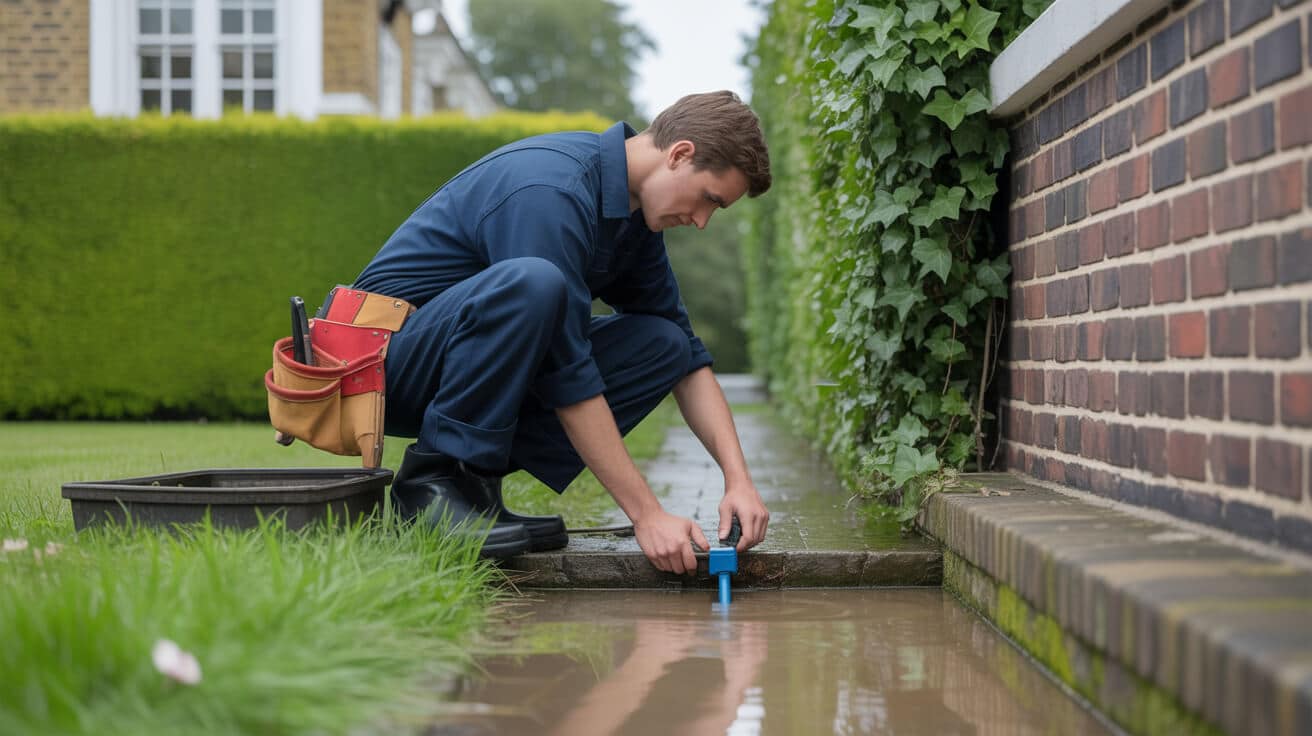
The single most important system choice beneath the pavement is your drainage—not all solutions carry the same safety or longevity. Installing the wrong one can be a time bomb for both your asset and your peace of mind.
Shortcuts on drainage in a basement always surface as problems later.
Macerator Pumps: Quick Fix, or Quick to Fail?
A macerator (think “Saniflo”) grinds up waste for pumping through narrow pipes—handy in tiny spaces or quick WC conversions, but rarely suitable for bigger projects.
- Strengths: Great for single cloakrooms or low-usage conversions; easy to fit without remodelling.
- Risks: Can clog on wipes or heavy use; not compliant for main bathrooms or kitchens under current Water Regs; lifespan plummets with overuse.
- Legal notes: WRAS and Part H specify macerators should only cover short runs above the unit and always vent externally—cut corners void compliance and warranty.
Sump & Pump: The Only Option for Full-Use Basements
Installing a kitchen, bathroom, or laundry beneath street level? A properly designed sump & pump station is essential.
- Strengths: Handles multiple fixtures, ties into perimeter waterproofing, and copes with the big surges that come from simultaneous showers or washing machine drains.
- What matters: Always specify twin independent pumps, with auto fallback and battery backup; use separate non-return valves; alarms should be both audible and connected (so you get notified even if you’re not at home).
- Professional view: More than 70% of insurance claims on London basements now relate to pump or valve failures—most due to inadequate or uncertified design *(Thames Water Claims Analysis, 2024)*.
Cutting costs at instal means paying for it down the line, financially and emotionally. Insist on a full system design from a certified engineer with WRAS/WaterSafe credentials.
What Building Codes Govern Backflow and Flood Prevention Underground?

Gravity drainage alone won’t save you in a basement—statutory regulations require active, tested barriers to backflow and flooding. You’re not just meeting red tape; you’re protecting your health, asset, and future cash flow.
The only defence against wastewater rising through your floor is a certified, tested barrier—never wishful thinking.
What Are the Must-Follow Laws?
- Approved Document H (Part H): Every discharge from a basement must use a certified, WRAS-approved non-return (anti-flood) valve, accessible for maintenance and clearly identified in as-built plans.
- WaterSafe and WRAS standards: DIY or “generic” valves aren’t just risky, they can make your instal non-insurable and fail every inspection.
- Council overlays: Boroughs with high flood risk often demand smart alarm monitoring for all pumps and regular, photo-documented evidence that valves operate as required (Hackney, Camden, Westminster).
How Is Pass/Fail Decided?
- A self-closing non-return valve documented by serial and commissioning log.
- Signed documentation from a qualified engineer, including installer ID.
- Proof (logbook/photos) available for Building Control and your insurer.
There’s no room for error or “good enough” here—the city’s water table and insurance market have seen enough avoidable disasters to be unforgiving.
What’s the Relationship Between Waterproofing and Plumbing in Basements?
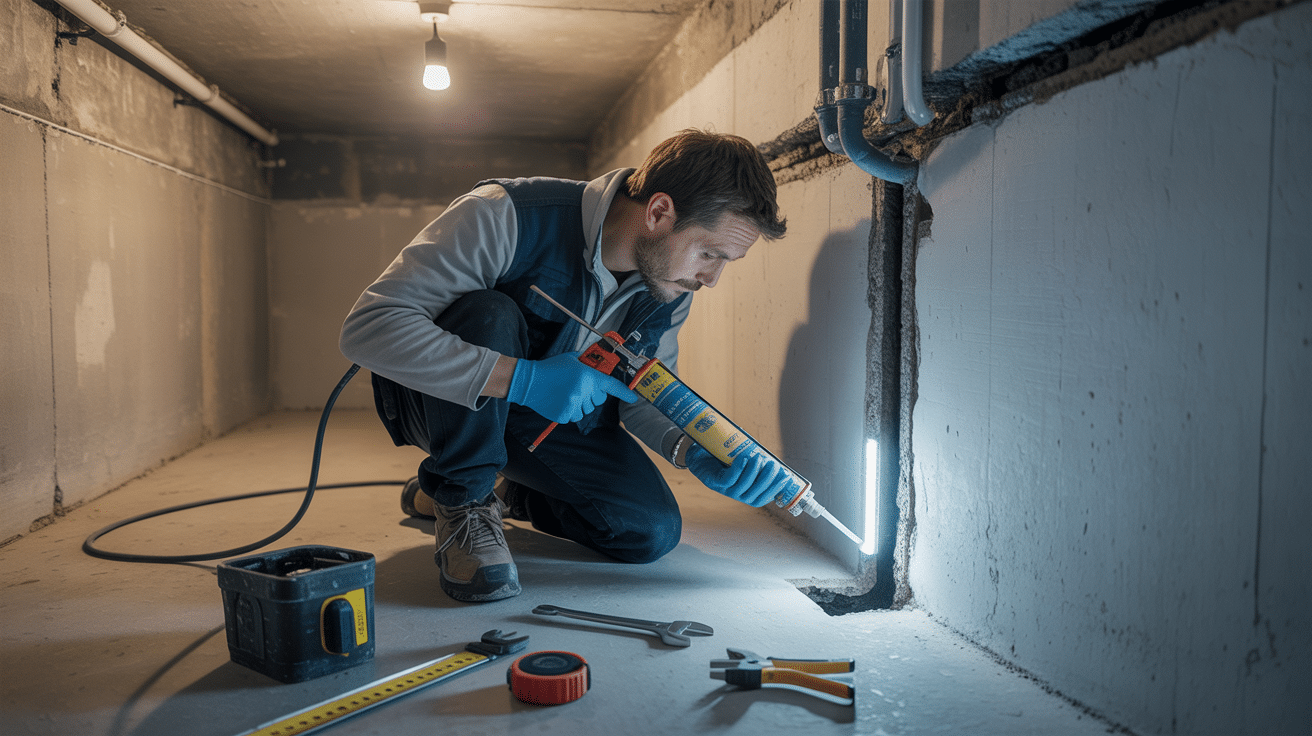
London’s best plumbing falters if water creeps through walls or floor. Below-ground build demands that waterproofing and plumbing operate as a seamless unit—if not, failures hit fast and hard.
If it leaks—inside or out—your asset is at risk. No product replaces system integration.
Today’s Technical Standards
- BS 8102 (2022): Basement living spaces must be “Grade 3”—meaning absolutely no water ingress, not even damp patches.
- Preferred method: Type C “cavity drain” systems with channel-collector pipes feeding directly into a monitored sump pump.
- Pipework rules: Every pipe passing through a membrane must be WRAS-certified, grommet-sealed, and mapped for future access.
- Maintainability: All perimeter drainage and overflow alarms must be visible and accessible for annual checks—builders who cover or box-in these features will set clients up for future compliance failures.
- Value impact: Increasingly, insurance and mortgage approvals demand a certified “waterproofing integration log”, showing not just what kit was used, but its fit to the property and maintainability.
Trying to patch leaks after the fact is never a real fix. Licenced engineers log every membrane joint, pipe passage, and risk junction—making every element visible and verifiable.
Why Is Mechanical Ventilation Fundamental for Basement Comfort and Compliance?
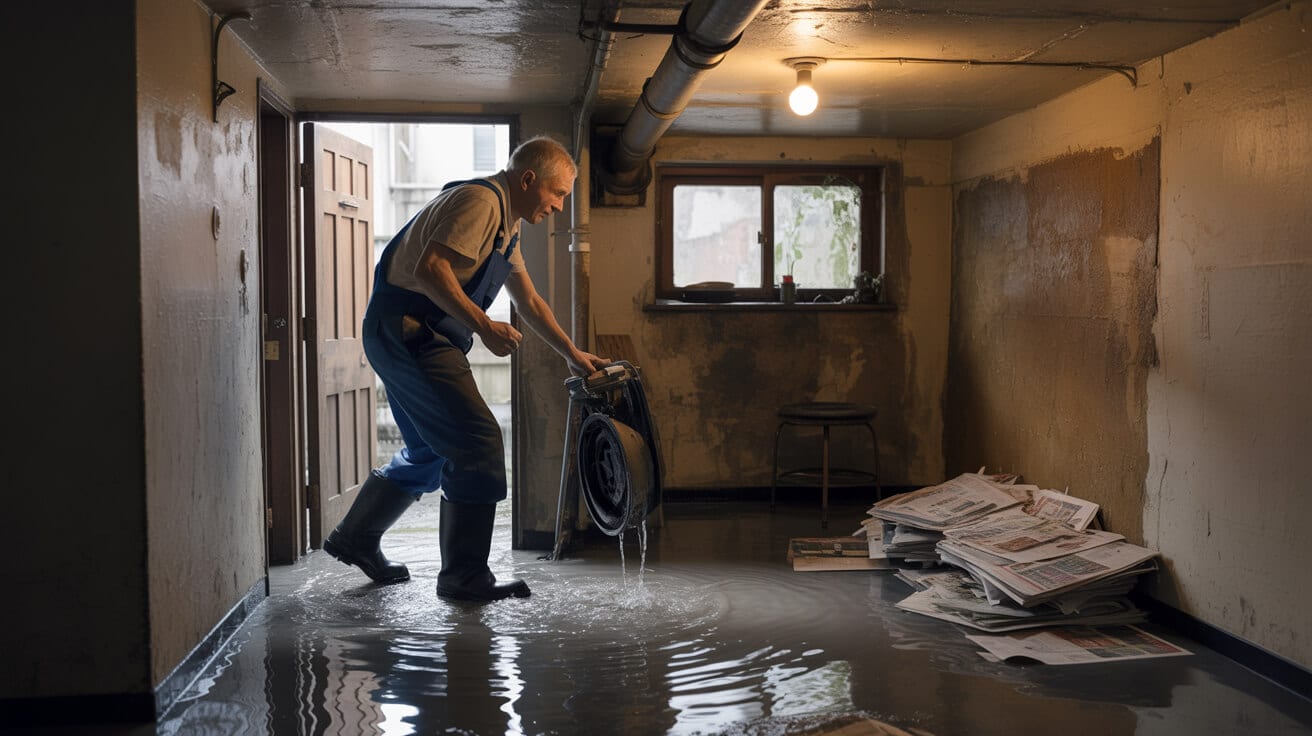
Efficient, engineered air movement is now compulsory. You can’t simply “crack a window”; modern regulations require mechanical systems that verify air changes and prevent odour, damp, and mould.
Properly-vented basements smell like hope, not yesterday’s storm. It’s all in the system design.
What’s Legally Required?
- Part F (Ventilation): Any room for living or working, below ground, must use mechanical extract fans driving at least 15 litres/second, with overrun timers, and venting outdoors.
- Pumped system venting: Every macerator, sump, or pump WC must have an independent vent chasing daylight, not just a riser.
- Documentation: Mortgage brokers, property managers, and sales agents now require commissioning proof—photos or signed test sheets from engineers.
Failure here doesn’t just invite damp and odour, it kills resale and invites rent deductions or claims against your management company. Document everything, or expect expensive rework just to meet minimal habitability.
Which Documents and Certificates Really Secure Your Basement’s Value?
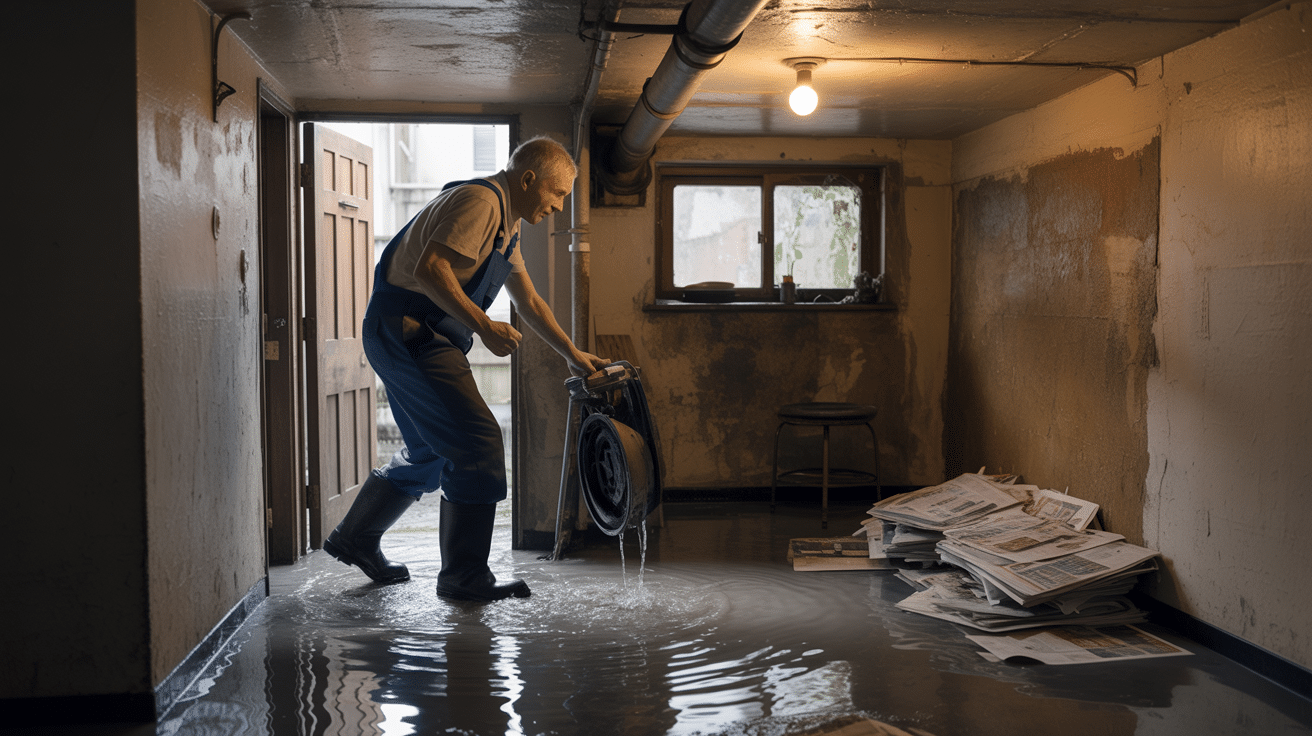
A basement in zone 1 or the suburbs hardly matters at sale unless you can prove and transfer compliance, servicing, and system design. Each party—buyer, lender, landlord, tenant, or council—demands paperwork. This is your tangible insurance for every pound spent underground.
Ownership isn’t just bricks and pipes. It’s proof—the bundle of documentation that keeps your margin, claim, or resale safe.
Essential Documentation Stack
- As-built plans: Pipe runs, pump layouts, vent routes, system integration with membrane and drainage.
- Certificates: Installer’s WRAS, WaterSafe, G3 log, with engineer ID and issue dates.
- Logbook: Signed entries after every service, repair, or commissioning—for both legal and insurance coverage.
- Photo/receipt bundle: Each fitting, fix, or upgrade, with visual record and model number.
Consequences of Documentation Gaps
- Insurance: Claims can—and will—be denied if the required logs or certificates are missing upon a basement flood.
- Resale: Lenders require full logs and certificates; failure triggers price cuts or “refusal to lend” letters.
- Long-term ownership: Agents or property managers without records risk council penalties and voided repairs.
Every system designed and installed by Plumbers 4U comes with this airtight logbook as standard. Keep your records as safe as your drains.
What’s Involved in Maintaining Pumps, Valves, and Drains in a Basement?
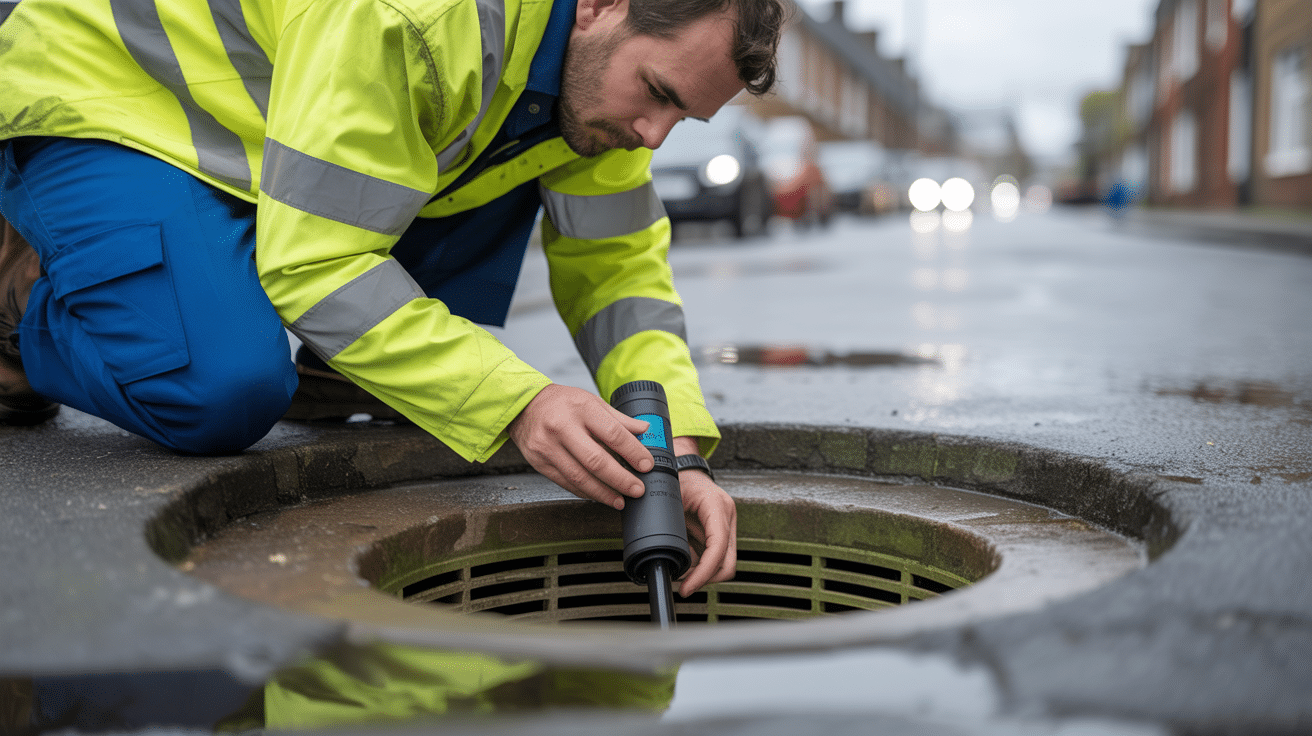
Best-in-class equipment still fails if neglected. London’s groundwater, chalk, and clay can stress any system—so scheduled servicing is part of every reliable basement build, not an extra.
Good maintenance means your basement works for you, not against you.
Gold-Standard Maintenance Regimen
- Annual full-service: Pumps, valves, alarms, and waterproofing all serviced by certified engineers, including battery swaps and alarm testing.
- Storm/event checks: After major rain or local sewer events, prompt inspections can catch problems before disaster; “fit and forget” is never safe underground.
- Meticulous logging: Name, date, part code, and a photo for every service, with logbook ready for next engineer.
- Certified replacement parts: All new kit—especially valves and safety alarm units—should be WRAS or WaterSafe certified for full insurance and legal validity.
Property asset value is as much “maintenance history” as “fit-out quality”. Every Plumbers 4U contract includes a handover log and clear instructions for ongoing care.
Why Is Forward-Looking Aftercare the Smartest Investment for Basement Owners?
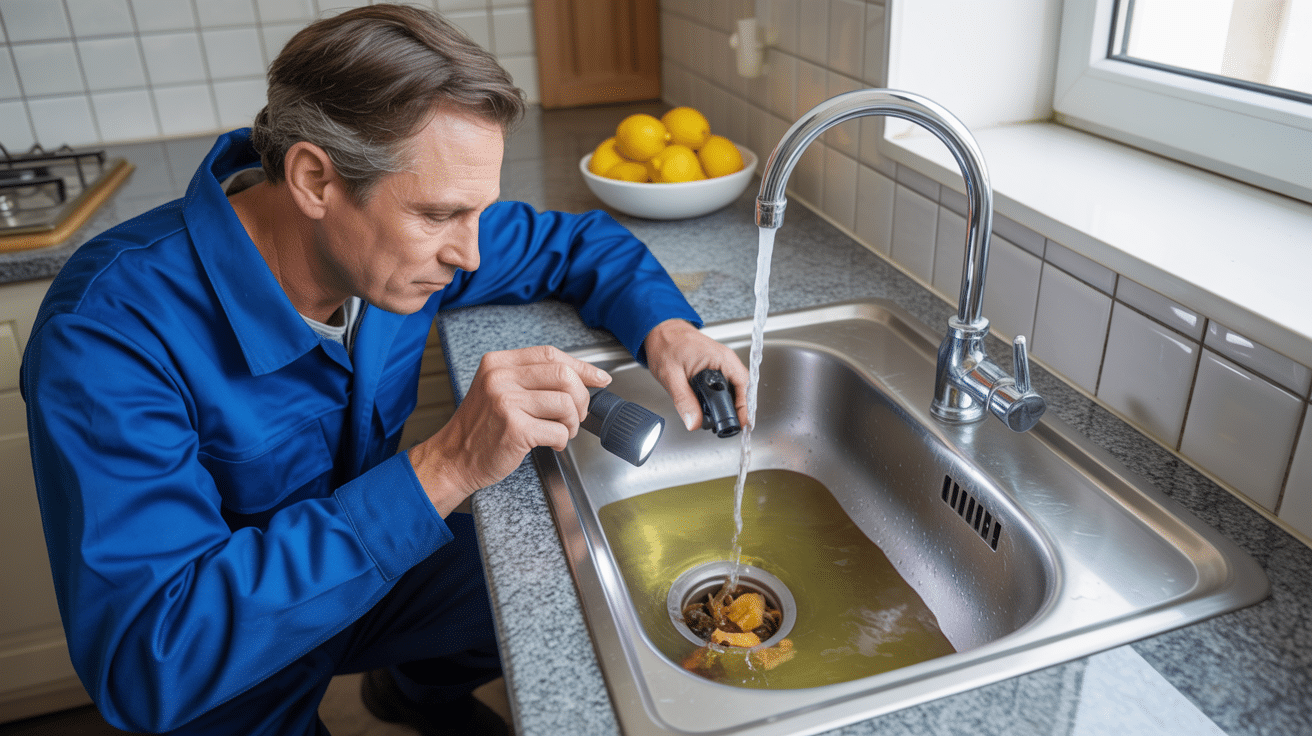
The temptation for shortcut fades after your first “event”—a blockage, an alarm, or that nasty surprise of a denied insurance claim. Real value in London’s basements comes from disciplined aftercare, not the fanciest tap or tile.
You don’t plan on flooding. You just plan to recover—with proof and a phone number you trust.
How to Stay Safe—and Get the Highest Return
- Automate reminders: Digital notifications for services, checks, and philtre swaps cut through the noise of multiple properties, tenants, or schedules.
- Work only with certified partners: Genuine documentation is now tied to engineer and company credentials—no certificate, no warranty, no claim.
- Lifetime logbook: Store every service, upgrade, and fix—pass it to new tenants or owners to preserve both trust and resale.
- Be the “reference standard”: Hand over your documented file with pride; these assets move fastest on the market and command the safest premiums.
Aftercare isn’t trouble—it’s your most powerful asset as an owner, manager, or landlord. With Plumbers 4U, trusted engineers keep your file up-to-date as a standing legacy for any property.
Why Choose Plumbers 4U for Your London Basement Project?
Opting for Plumbers 4U is about more than ticking a compliance box; it’s about transforming your risks into resilience and your property into a long-term asset. Every step—design, installation, certificate, and aftercare—is managed by WRAS, WaterSafe, and G3-certified engineers who treat your basement as if it were their own.
With Plumbers 4U, you receive:
- Wall-to-wall project management, from detailed invert surveys to commissioning and final paperwork.
- Dual-pump, backed-up drainage systems and fully documented waterproofing, installed to satisfy even the toughest council, lender, or insurer demands.
- Expert walk-throughs, transparent quotes, and maintenance roadmaps that make sense to both first-time buyers and seasoned property professionals.
The difference between a confident, compliant basement and one that’s a risk? Teaming up with proven, certified engineers who keep the evidence as robust as the plumbing.
This is why so many Londoners—homeowners, managers, and local authorities—make us their first call underground. Book your tailored assessment or compliance review with Plumbers 4U today, and set up a basement that withstands scrutiny, earns trust, and delivers unmatched value.
Frequently Asked Questions
What silent design issues jeopardise London basement plumbing, and how do experienced teams eliminate risk?
You never spot the real threat until it’s underfoot. London basements turn plumbing into a fight against geography, history, and urban complexity. Any system sited below the “invert level” has to move waste upwards, relying on pumps and non-return valves rather than gravity alone. But that’s not the whole puzzle—Victorian shared drainage, property line ambiguity, buried “bodge jobs,” and regulatory scrutiny mean shortcuts can turn a week of work into months of remedials and spiralling insurance claims.
The single biggest peril? Hidden crossovers and blocked access: in older terraces, drains may run through your neighbour’s land, and historic soil stacks could feed three properties before they ever meet the main. Many homeowners, landlords, or agents discover substandard repairs or missing backflow valves too late—often after both their property and their neighbour’s have been damaged by one avoidable event.
What isn’t mapped or visible on day one will cause the biggest losses on day one hundred.
Which projects raise the stakes for hidden risk?
- Properties beneath the street sewer line, especially period conversions
- Full-use basements: gym showers, utility rooms, multiple bathrooms, or kitchens
- Boroughs with complex legal overlays—Westminster, Camden, Islington—requiring full mapped drainage
How do top-end projects avoid these mistakes?
Start with survey-driven plans (CCTV, soil stack tracing), WRAS/G3/WaterSafe-attested specialists, and inspection hatches you can actually open. Review architectural drawings for shared drains or rights of way. For Plumbers 4U, as-built diagrams, digital photo audits, and ongoing access plans are standard—so future tenants, agents, or insurers won’t force destructive rework later.
Why does the wrong choice between macerator, sump, and pump cost so much more than you think?
When you’re choosing basement plumbing tech, “good enough” is the fastest route to disaster. Macerators grind waste for single, low-use appliances, but ask them to carry a main bathroom, kitchen, or continuous flow and the result is blockages, foul backups, and at worst, contaminated finishes that no sanitiser can save. The real kicker? Misused or under-serviced macerators are responsible for over 40% of insurance claim rejections involving sub-street-level plumbing (London Building Network, 2024).
Upgrade to a sealed, twin-pump sump system—now a must-have for high-use rooms per London Building Control—and you get powered uplift, audible alarms, battery backup, and independence from power dips. Installers like Plumbers 4U go further: they separate each major service, fit WRAS-listed valves, and configure remote alerting so you hear of a fault before the damage is done.
Ignoring the difference between backup and basic is why most failures get spotted weeks after the main event.
When is each system truly appropriate?
- Macerators: for cloakrooms or WCs used a few times a week—never main family bathrooms or kitchens.
- Sump & pump: non-negotiable for utility rooms, showers, kitchens, or any regular-use outlet below the sewer line.
- Twin-pump with alarm and service hatches: mandatory for insurance eligibility and compliance in conversions or tenanted properties.
Best practice for installation and maintenance
Document every pump test and battery check. Schedule alert tests monthly and log electronically—insurers and buyers both demand proof. Plumbers 4U supplies digital evidence packs as part of every handover, so future compliance is never an afterthought.
What new documentation hurdles make London basement compliance an everyday challenge?
In central London, paperwork is now your first and last line of defence. Authorities and insurers demand a “compliance provenance” file: a bundle of mapped runs, certifications, commission logs, G3/WRAS/WaterSafe documents, as well as service records, engineer numbers, and evidence photos. From Part H (mandating mechanical evacuation for anything below mains) to Part G and the latest G3 requisites (proof of anti-scald, accessible valves, vented service zones), inspectors are now trained to call out even minor errors as showstoppers.
Actual fines for missing evidence may be rare, but mortgage refusals, post-sale audits, and rental pauses happen daily. In 2023, 90% of resolved insurance claims over £25,000 referenced digital evidence logs—not just “completion notes” (Facility Times, 2023). Commercial and residential buyers now expect these files at exchange; tenants and agents request access on sign-up.
What is the absolute minimum compliance standard?
- Full pipe-and-component as-built drawings
- Serial-numbered engineering certificates
- Photo records of all hatches, valves, and key devices
- At least one in-date service log (digital or signed physical)
Plumbers 4U generates and retains every compliance document for the life of the project, so no property is left in “grey zone” status, where a single oversight stops a letting, resale, or claim.
How do modern waterproofing and backflow prevention principles actually build value—not just survival—for your property?
Every modern London basement walks a knife-edge between water ingress and lasting asset value. Insurers, buyers, and Building Control treat WRAS anti-flood valves, Type C membranes (BS 8102:2022), and openable inspection hatches as proof you’ve protected not only appearance but the core resale multiplier: documented resilience. Any shortcut—skip a valve, block a service route, or use “decorative only” boxing—voids insurance and depreciates value.
Audit-ready paperwork isn’t the only proof buyers now expect. A growing majority want timestamped logs, maintenance receipts, and engineer notes on at least two annual visits. In practice, 72% of failed insurance claims after the 2023 Thames storms were due to missing, out-of-date, or fabricated service entries; that figure triples for tenanted or multi-owner properties (Data: UK Loss Adjusters’ Survey, 2024).
The memory of a leak isn’t what matters—being able to prove it never happened is what drives offers and claims.
Key maintenance and inspection steps
- Post-storm and quarterly checks for pumps and valves, logged digitally and physically
- Openable boxing for all accessible devices—never accept glued or paint-sealed covers
- Service engineer reporting routed both to owners and any managing agents
Plumbers 4U programmes reminder logic and provides secure evidence storage, keeping assets compliant and ready for any event.
Why does evidence matter more to insurers, buyers, and landlords than any visible fixture?
Regulations and tech evolve, but the one constant in London basements is paperwork as purchase power. The “compliance file” is now a must-have at every sales or letting event: fail to produce a dated log, certificate with engineer contact, or dampproof report, and even flawlessly installed plumbing becomes a liability.
It’s not an abstract penalty—every major insurer uses missing or unregistered devices as a reason to delay or reject claims. In market terms, basements with full evidence chains (digital and signed paper) appreciate 8–12% faster than similar spaces not covered by certs, recent audits, and mapped service points (UK Surveyor Index 2023). For landlords and agents, this means fewer gaps, premium tenants, and higher renewal rates.
No one ever regrets over-documenting their plumbing—only under-documenting it when claims or contracts are on the line.
Building an ironclad paper trail
- Keep digital and hard-copy packs at every change of occupancy or management
- Include contact info for every certifying engineer and maintenance firm
- Ensure every device, valve, and sump is uniquely mapped with update dates
For every Plumbers 4U job, the evidence is created, reviewed, and stored for the client—the very tools that accelerate claims, resale, and value growth.
What routine steps and mindset differentiate a “futureproofed” basement from a ticking liability?
Today’s resilient London basement is a living system, not a box to be “handed over.” Owners and agents who treat aftercare, inspection routines, and service logging as weekly events—rather than annual chores—outperform on every property asset metric from rent-ability to resale. Every post-storm check, alarm test, or valve inspection isn’t a hassle—it’s a precondition for uninterrupted value and peace of mind.
Progressive landlords now integrate QR-coded logbooks, cloud-stored handover packs, and engineer-signed service entries, ready for the next buyer, tenant, council check, or major insurance event. When the rain comes (and it always does), those who’ve tracked every event and device will have the documentation to keep living, selling, or letting—while everyone else waits in limbo.
The only basements that sail through audits are the ones with a storey told in timestamped evidence.
Practical futureproofing essentials
- Develop a routine of post-storm and monthly system tests—don’t leave it to luck or “annual service”
- Digital handover files with update triggers for each new owner or letting agent
- Use alarm and logbook tech supported by your installer—not generic paperwork
Plumbers 4U automates, tracks, and delivers every log—making future success the default, not a gamble.

